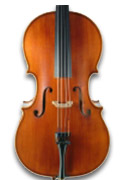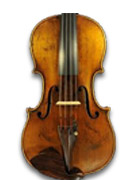詳細
Leopold Renaudin violin, Paris circa 1780 - 1790.
This is an authentic and beautiful hstorical master violin made circa 1780-1790., from the golden age of French violin making in Paris; from the entourage Leopold Renaudin (1756 – 1795).
A very fine violin with a beautiful patina/varnish.(had some colour retouches during the years).
Beautiful and super rare skilled purfling, Wears old label : Hendrik Jacobs me fecit in Amsterdam.
The top plate was dendrochronologically dated (Peter Ratcliff) to the year circa 1790 and attributed, to be French, with wood used by makers like
Vincenzo Panormo (his Paris period), Joseph Gaffino and Andrea Castagneri.
Interesting to know is that Vincenzo Panormo (during his Paris) period, had his workshop located close to the workshop of Leopold Renaudin in Paris,who was one
the early adopters of the Strad model in Paris.
This violin is made of very fine selected wood - a very nice flamed one-piece back, made of, nicely maple,
flamed ribs and a good carved scroll.
Interesting purfling.
This violin produces a warm, powereful and rich tone, with plenty of personality and projection.
The violin comes with a new set of strings and a new chinrest, tailpiece.
It has some old repairs but is in a playable condition.
LOB: ca 358 mm (4/4).
- Contact us here for more info
see more French violins
Léopold Renaudin
Léopold Renaudin (11 March 1749 – 7 May 1795) was a French revolutionary sworn to the Revolutionary Tribunal.[1]
Renaudin was born in Saint-Remy in the Vosges, the son of Gaspard Renaudin, shoemaker, and Mary Anne Miquel. He became a luthier and worked in Paris at the Royal Academy of Music. In 1776, he moved to rue Saint-Honoré, close to the Opera, in the section of the Oratory, where he remained until the end of his days. In his work, he is particularly known for his basses, which are still sought after in the 21st century.[2]
A supporter of revolutionary ideals, he became an elector of his section 1791 and 1792. Mandated by the section to demand in the Legislature on 3 August 1792 that the king be deposed, he sat on the Paris Commune on August 10. One of the most energetic members of the Jacobin Club, the jury considered him the hardest of those tried in the Revolutionary Court. At trial, he defended himself, like most defendants, by saying: "At that time, everyone would have voted as we did". Sentenced to death on 17 Floreal, year III, he was guillotined the next day in Paris, on the Place de Grève, with fifteen co-defendants.
Pls contact us for more info.


























